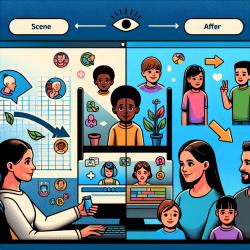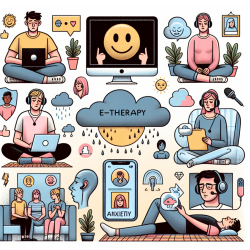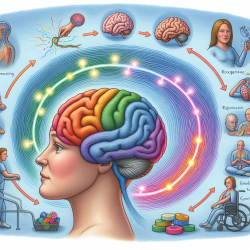In the ever-evolving landscape of speech-language pathology, telepractice has become an indispensable tool, especially in the context of a global pandemic. A recent study titled A Preliminary Investigation of the Reliability of Acoustic Parameters of Voice through Smartphone Recordings in Individuals with Dysphonia sheds light on the reliability of acoustic voice parameters when recorded via smartphones. This study has significant implications for practitioners aiming to improve their diagnostic and therapeutic practices for children with voice disorders.
The study involved 20 participants, divided equally between those with typical and pathological voices. Acoustic and perceptual evaluations were conducted using both real-time voice and tele-recorded voice samples. The key acoustic parameters analyzed included Fundamental Frequency (F0), Cepstral Peak Prominence Smoothed (CPPS), and Acoustic Voice Quality Index (AVQI). The results revealed no significant perceptual differences between real-time and tele-recorded voices, making a strong case for the reliability of telepractice.
Key Findings and Implications
- Reliability of Acoustic Parameters: The study found no significant difference in F0 and CPPS between real-time and tele-recorded voices for both typical and pathological voices. This indicates that these parameters are robust and less sensitive to environmental noise, making them reliable for telepractice.
- Significant Differences in AVQI and Shimmer: AVQI and Shimmer showed significant differences between real-time and tele-recorded voices, especially in pathological voices. This suggests that while these parameters are useful, they may be more sensitive to environmental factors and require controlled settings for accurate measurement.
- Practical Applications: For practitioners, the study emphasizes the utility of CPPS as a more reliable acoustic parameter for diagnosing dysphonia through telepractice. Implementing this in clinical settings can enhance diagnostic accuracy and treatment efficacy.
Encouraging Further Research
While the study provides valuable insights, it also opens avenues for further research. Future studies should consider larger sample sizes and diverse types of smartphones and recording apps. This will help in generalizing the findings across different populations and technological settings.
In summary, this study underscores the potential of telepractice in diagnosing and treating voice disorders. By focusing on reliable acoustic parameters like CPPS, practitioners can make data-driven decisions that lead to better outcomes for children with dysphonia.
To read the original research paper, please follow this link: A Preliminary Investigation of the Reliability of Acoustic Parameters of Voice through Smartphone Recordings in Individuals with Dysphonia.










